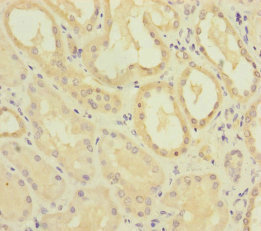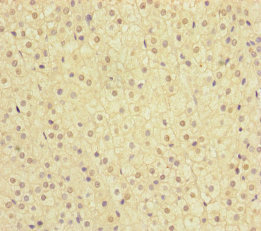Full Product Name
Rabbit anti-Homo sapiens (Human) MMACHC Polyclonal antibody
Alternative Names
1810037K07Rik antibody; BOS_3654 antibody; cblC antibody; DKFZp564I122 antibody; FLJ25671 antibody; Methylmalonic aciduria (cobalamin deficiency) cblC type with homocystinuria antibody; Methylmalonic aciduria and homocystinuria type C protein antibody; Methylmalonic aciduria and homocystinuria type C protein homolog antibody; MGC134307 antibody; MMAC_HUMAN antibody; MMACHC antibody; OTTHUMP00000009243 antibody; RP11 291L19.3 antibody; RP23-177C18.3 antibody
Immunogen
Recombinant Human Methylmalonic aciduria and homocystinuria type C protein (63-282AA)
Immunogen Species
Homo sapiens (Human)
Purification Method
Antigen Affinity Purified
Concentration
It differs from different batches. Please contact us to confirm it.
Buffer
PBS with 0.02% sodium azide, 50% glycerol, pH7.3.
Tested Applications
ELISA, IHC
Recommended Dilution
| Application |
Recommended Dilution |
| IHC |
1:20-1:200 |
Storage
Upon receipt, store at -20°C or -80°C. Avoid repeated freeze.
Lead Time
Basically, we can dispatch the products out in 1-3 working days after receiving your orders. Delivery time maybe differs from different purchasing way or location, please kindly consult your local distributors for specific delivery time.
Usage
For Research Use Only. Not for use in diagnostic or therapeutic procedures.







